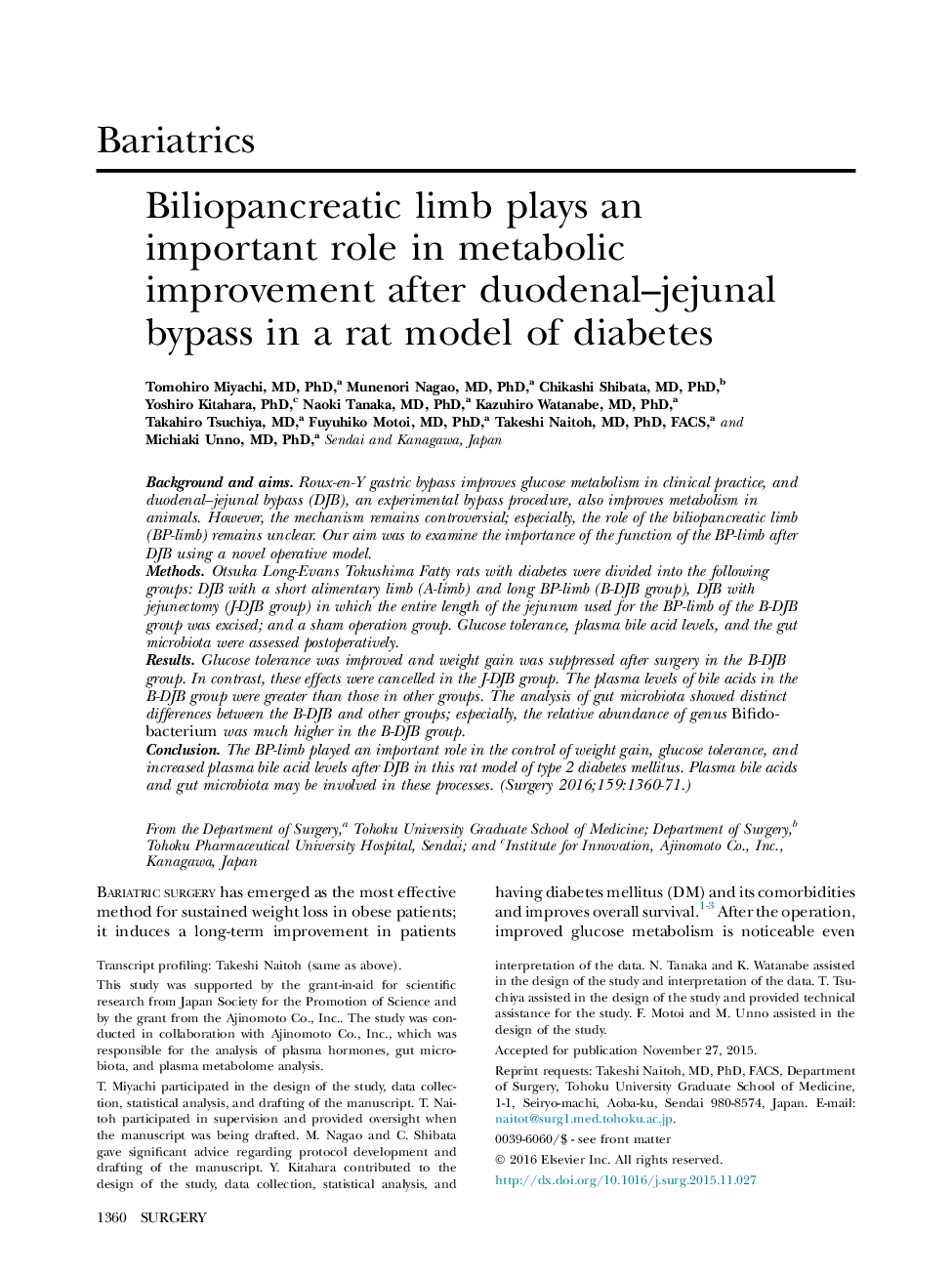| Article ID | Journal | Published Year | Pages | File Type |
|---|---|---|---|---|
| 6255061 | Surgery | 2016 | 12 Pages |
Background and aimsRoux-en-Y gastric bypass improves glucose metabolism in clinical practice, and duodenal-jejunal bypass (DJB), an experimental bypass procedure, also improves metabolism in animals. However, the mechanism remains controversial; especially, the role of the biliopancreatic limb (BP-limb) remains unclear. Our aim was to examine the importance of the function of the BP-limb after DJB using a novel operative model.MethodsOtsuka Long-Evans Tokushima Fatty rats with diabetes were divided into the following groups: DJB with a short alimentary limb (A-limb) and long BP-limb (B-DJB group), DJB with jejunectomy (J-DJB group) in which the entire length of the jejunum used for the BP-limb of the B-DJB group was excised; and a sham operation group. Glucose tolerance, plasma bile acid levels, and the gut microbiota were assessed postoperatively.ResultsGlucose tolerance was improved and weight gain was suppressed after surgery in the B-DJB group. In contrast, these effects were cancelled in the J-DJB group. The plasma levels of bile acids in the B-DJB group were greater than those in other groups. The analysis of gut microbiota showed distinct differences between the B-DJB and other groups; especially, the relative abundance of genus Bifidobacterium was much higher in the B-DJB group.ConclusionThe BP-limb played an important role in the control of weight gain, glucose tolerance, and increased plasma bile acid levels after DJB in this rat model of type 2 diabetes mellitus. Plasma bile acids and gut microbiota may be involved in these processes.
